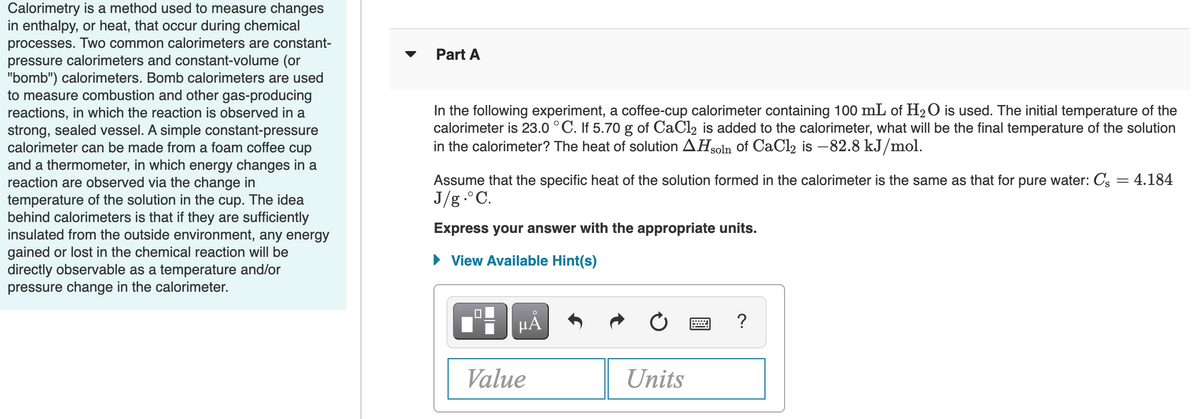In the following experiment, a coffee-cup calorimeter containing 100 mL of H2O is used. The initial temperature of the calorimeter is 23.0 °C. If 5.70 g of CaČl2 is added to the calorimeter, what will be the final temperature of the solution in the calorimeter? The heat of solution AHsoln of CaCl2 is –82.8 kJ/mol. Assume that the specific heat of the solution formed in the calorimeter is the same as that for pure water: C, = 4.184 J/g.°C. Express your answer with the appropriate units. • View Available Hint(s) ? Value Units
Thermochemistry
Thermochemistry can be considered as a branch of thermodynamics that deals with the connections between warmth, work, and various types of energy, formed because of different synthetic and actual cycles. Thermochemistry describes the energy changes that occur as a result of reactions or chemical changes in a substance.
Exergonic Reaction
The term exergonic is derived from the Greek word in which ‘ergon’ means work and exergonic means ‘work outside’. Exergonic reactions releases work energy. Exergonic reactions are different from exothermic reactions, the one that releases only heat energy during the course of the reaction. So, exothermic reaction is one type of exergonic reaction. Exergonic reaction releases work energy in different forms like heat, light or sound. For example, a glow stick releases light making that an exergonic reaction and not an exothermic reaction since no heat is released. Even endothermic reactions at very high temperature are exergonic.
Please answer question 9 part A

Trending now
This is a popular solution!
Step by step
Solved in 2 steps






